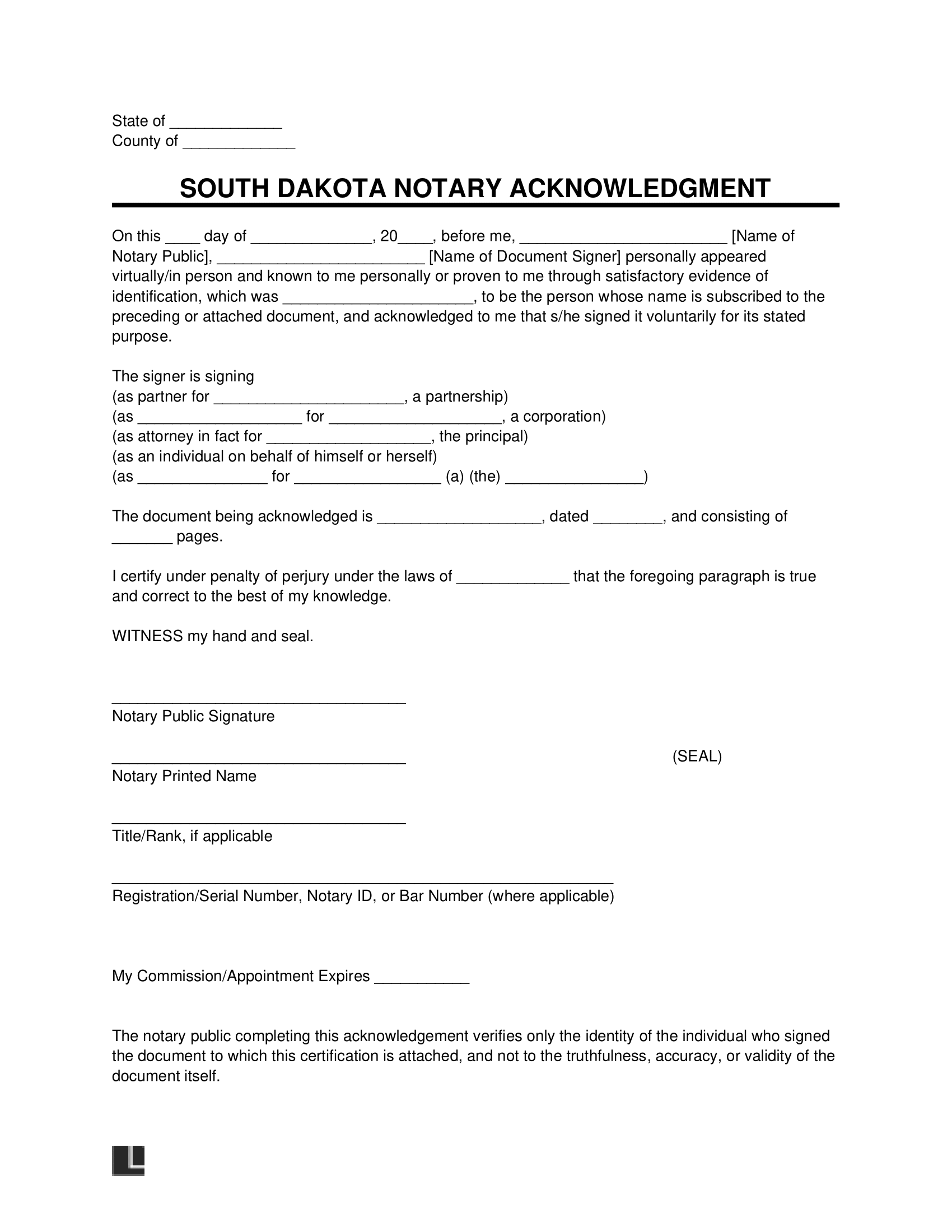A South Dakota notary acknowledgment form is a record a notary public completes to validate a person’s signature on another legal document. The notary can execute the form after they verify the signing party’s identity and the signing party declares their signature is theirs.
Signatories require notary services for various purposes. For example, their state or financial institution may require them to seek notarization of powers of attorney, living wills, marriage certificates, and title transfers.
Legal Considerations
Statute: SD Codified Laws Title 18.
Form of Acknowledgement: Under SD Codified Laws § 18-4-12, the form of general certification acknowledgment should include the state and county name, the signing party’s name, and proof of the signing party’s identity under the oath of another party (if applicable).
Notary Term of Commission: 6 years (SD Codified Laws § 18-1-1).
Notary Handbook: If you’re looking for a resource that offers do’s and don’ts of the notarial process and other tips, review the Notary Public Handbook.
Is Online Notarization Legal in South Dakota?
Yes. The South Dakota Legislature enacted Senate Bill 193 in 2021, allowing notary publics to notarize documents remotely. Please note that the notary public must have personal knowledge of the signing party to perform remote notarization. The notary public should have had regular interactions with the signatory or be their public accountant, auctioneer, real estate agent, or attorney.
Laws: SD Codified Laws §§ 18-1-1.1(6), 18-1-11.1, and 18-4-29.
How to Notarize
Step 1 – Find a Notary
Find a notary public in your area by contacting credit unions, banks, law offices, and real estate offices. Also, consider parcel shipping stores (like UPS) and photocopy shops. Even police stations in your area might offer notary services.
Step 2 – Complete Your Document
Complete your document (like a power of attorney) with all pertinent information, ensuring you leave nothing blank. Bring your document with you to your notary appointment. Procure $10 to bring with you to the appointment, as this amount is the most a notary can charge for each signature they provide.
Step 3 – Show Your ID
The notary public will collect satisfactory evidence to prove your identity. This evidence could be a government-issued photo ID or a state driver’s license.
Step 4 – Sign the Document
Once the notary public verifies your identity, you can sign the document in front of them. If you already signed it before meeting with them, you must take an oath affirming that the signature on the document is yours.
How to Verify a Notary
- Visit the Notary Public Commission Records on the Secretary of State’s website.
- Enter the notary’s first and last name. Use the additional fields to narrow your search further. For example, you can enter the notary’s city and county of commission and expiration date.
- View the search results. Click on a commission number to read additional information.


